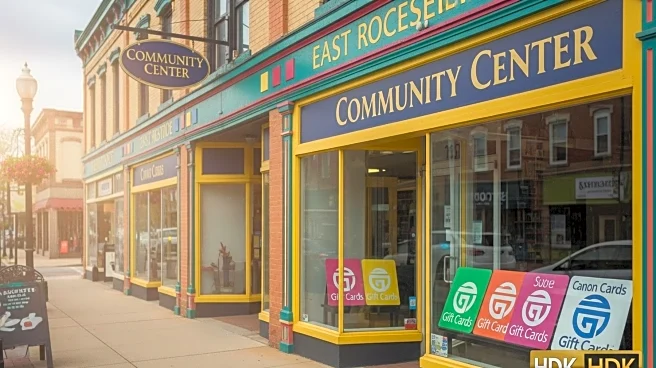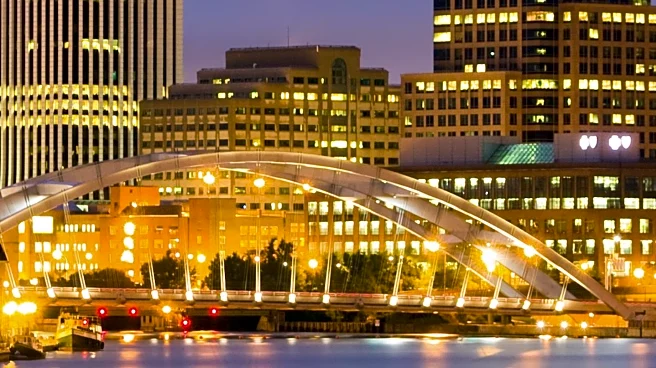What's Happening?
Starbucks has inaugurated a new store in downtown Rochester, New York, situated within the Five Star Bank Plaza at 100 Chestnut Street. This new location occupies a remodeled section of the building's lobby and is open from 6 a.m. to 6 p.m. on weekdays and 7 a.m. to 4 p.m. on weekends. The Five Star Bank Plaza, a 21-story building, is home to several tenants including Greater Rochester Enterprise and iHeartMedia studios. This opening adds to Starbucks' existing presence in Rochester, which includes locations at Blossom Road, Mt. Hope Avenue, and the University of Rochester campus. However, the company has recently closed its Park Avenue store as part of a broader downsizing effort.
Why It's Important?
The opening of a new Starbucks in downtown Rochester signifies the company's continued investment in the area, potentially boosting local business activity and providing more options for residents and visitors. This expansion comes amid a period of strategic downsizing for Starbucks, indicating a selective approach to maintaining and growing its footprint in key locations. The new store could attract more foot traffic to the Five Star Bank Plaza, benefiting other businesses housed within the building. Additionally, it reflects Starbucks' adaptation to changing market conditions and consumer preferences, focusing on high-traffic urban areas.
What's Next?
As Starbucks continues to adjust its store portfolio, further openings or closures may be anticipated based on market demand and company strategy. The new downtown location may prompt increased competition among local coffee shops, potentially influencing pricing and service offerings. Stakeholders, including local businesses and city planners, will likely monitor the impact of this new store on downtown Rochester's economic activity and community engagement.
Beyond the Headlines
The strategic placement of Starbucks in downtown Rochester highlights the company's focus on urban centers, which may influence cultural and social dynamics in the area. The presence of a global brand like Starbucks can affect local coffee culture, potentially leading to shifts in consumer preferences and expectations. Additionally, the closure of other locations suggests a reevaluation of operational efficiency and market saturation, which could have long-term implications for Starbucks' business model.










